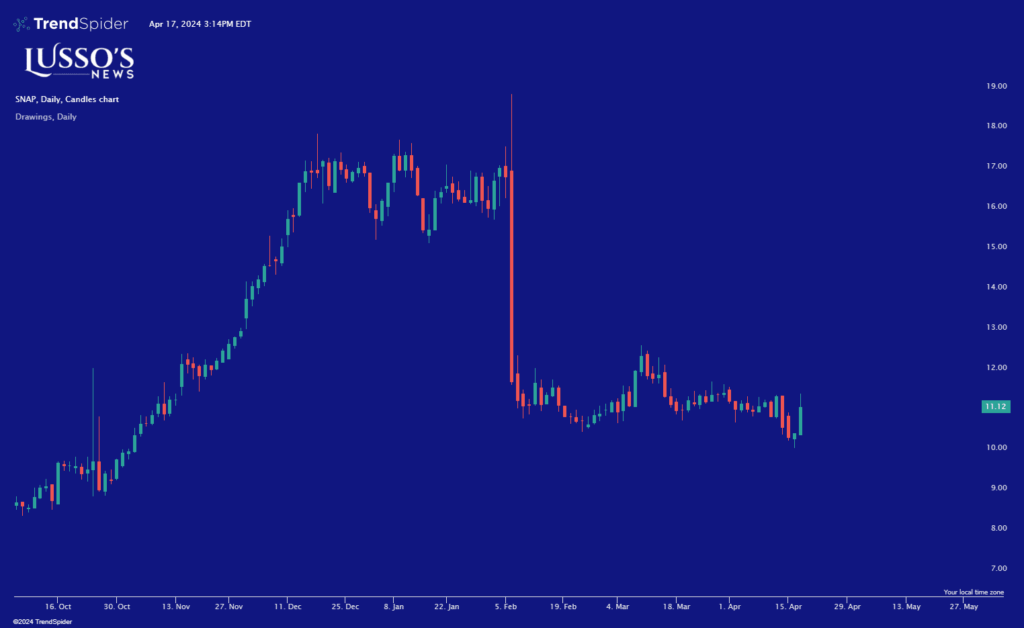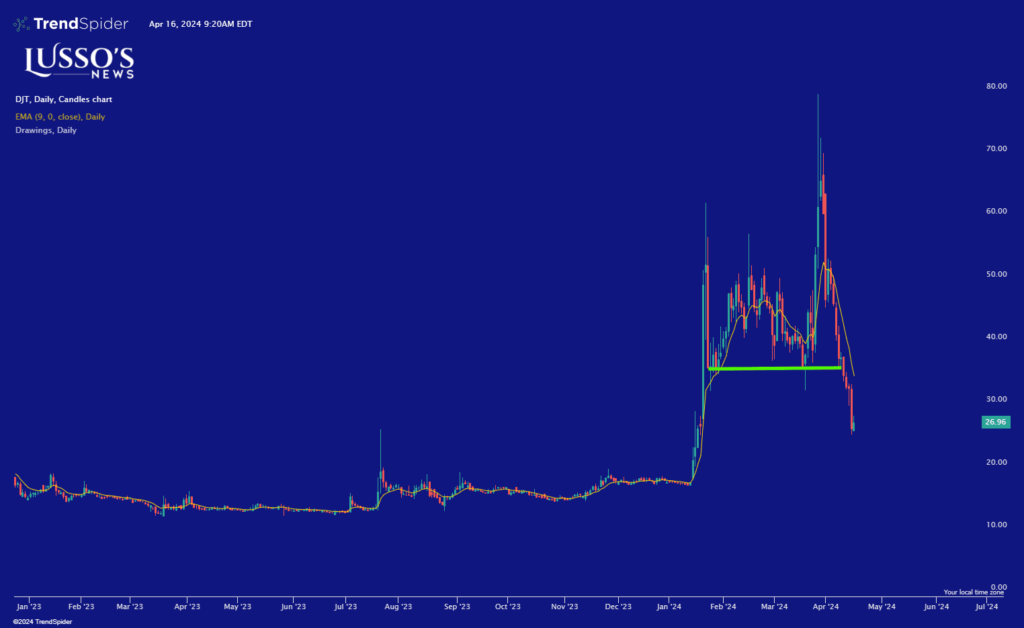Business
The Dark Flaws Of Social Media That Is Killing Humanity

Do you want handpicked stocks from a Wall Street Veteran?
We have over 120,000 traders and investors JUST LIKE YOU subscribed to our newsletter and we hope you consider getting on the list because our content comes straight from a Wall Street Veteran Desk! We DO NOT want YOU to MISS IT!
Social Media Makes Everyone Look Better, Here Is How
Social media has become an integral part of our daily lives and has significantly impacted the way we present ourselves to the world. One way in which social media has changed the way we present ourselves is by making it easier for people to present a highly curated and polished version of themselves to the world.
On social media, people can carefully select the photos and videos they post, choosing only the most flattering and attractive ones. They can also use various editing tools to enhance their appearance, making themselves look better in the process. This ability to present a highly polished and idealized version of oneself can lead to a distorted perception of reality and can make others feel inadequate or dissatisfied when they compare themselves to the seemingly perfect lives presented on social media.
Furthermore, social media allows people to present a highly curated version of their lives, showcasing only the most positive and exciting aspects and leaving out the mundane or negative ones. This creates a distorted view of reality, as people’s social media feeds often present an unrealistic and idealized version of life.
In conclusion, social media has made it easier for people to present a highly polished and idealized version of themselves and their lives, leading to a distorted perception of reality. While social media can be a useful tool for connecting with others, it is important to remember that it does not always provide an accurate representation of reality.
Does Social Media Cause Mental Health Issues?
There is evidence to suggest that social media can have negative effects on mental health, although the relationship is complex and not fully understood. Some studies have found that excessive use of social media is associated with an increased risk of mental health problems such as depression, anxiety, and low self-esteem.
One potential reason for this is that social media can contribute to feelings of social isolation and disconnection. When people spend a lot of time on social media, they may become less engaged in face-to-face interactions and may feel disconnected from the people around them. This can lead to feelings of loneliness and isolation.
Additionally, social media can also contribute to feelings of anxiety and stress by creating a constant need to stay connected and updated. People may feel pressure to present a perfect image of themselves on social media and may feel anxious if they do not receive enough likes or comments.
Furthermore, social media can also expose people to a constant stream of negative or upsetting content, such as bullying or discrimination, which can affect mental health.
It is important to note that social media is just one factor that can contribute to mental health issues, and other factors such as genetics, environment, and personal experiences also play a role. It is also important to recognize that social media can have positive effects on mental health, such as providing a sense of connection and support.
In conclusion, there is evidence to suggest that social media can contribute to mental health issues, although the relationship is complex and not fully understood. It is important for individuals to be aware of how social media is impacting their mental health and to use it in a healthy and balanced way.
Is Social Media Addiction Real?
Social media can be addictive for some people, although it is not considered to be a traditional addiction like substance abuse. However, the term “internet addiction” or “social media addiction” has been used to describe excessive use of the internet and social media that interferes with daily life.
There are several factors that can contribute to social media addiction, including the use of social media as a coping mechanism, the need for validation and approval from others, and the desire for social connection. Social media can also be addictive due to the way it is designed, with features such as notifications, likes, and comments that can provide a constant stream of reinforcement and lead to a feeling of gratification.
It is important to note that while some people may be more prone to social media addiction due to underlying psychological issues or personal circumstances, it is not considered to be a mental disorder in and of itself. However, excessive use of social media can lead to negative consequences such as social isolation, problems with sleep, and decreased productivity, and it is important for individuals to use social media in a healthy and balanced way.
Suicide Correlation With Social Media
Suicide is a significant public health issue, and social media has been identified as a potential risk factor for suicidal thoughts and behaviors. While the relationship between social media and suicide is complex and not fully understood, research suggests that there may be a correlation between the two.
One possible reason for this is that social media can contribute to feelings of social isolation and disconnection. When people spend a lot of time on social media, they may become less engaged in face-to-face interactions and may feel disconnected from the people around them. This can lead to feelings of loneliness and isolation, which are known risk factors for suicide.
Additionally, social media can also expose people to a constant stream of negative or upsetting content, such as bullying or discrimination, which can affect mental health and increase the risk of suicide. Research has also found that social media can contribute to the development of mental health issues such as depression and anxiety, which are also known risk factors for suicide.
It is important to note that social media is just one factor that can contribute to the risk of suicide, and other factors such as genetics, environment, and personal experiences also play a role. It is also important to recognize that social media can have positive effects on mental health, such as providing a sense of connection and support.
In conclusion, research suggests that there may be a correlation between social media and suicide, although the relationship is complex and not fully understood. It is important for individuals to be aware of how social media is impacting their mental health and to use it in a healthy and balanced way. If you or someone you know is experiencing suicidal thoughts, it is important to seek help from a mental health professional or crisis hotline.
Business
Mortgage Rates Hit 7.1%: Analyzing the Impact on the U.S. Housing Market

DO NOT MISS THIS FREE OPPORTUNITY!
ARE YOU A TRADER?
DO YOU WANT FREE STOCK PICKS?
CHECK THIS OUT….
Ready to elevate your trading game with the next big winner? Don’t miss out – join the savvy investors who are already benefiting from our Wall St veteran’s free SMS alerts. Act now! Sign up at https://slktxt.io/ZmRx or send ‘FREE’ to 844-722-9743 and be the first to get the insider scoop on what’s hot in the market
The U.S. housing market is experiencing significant pressure as mortgage rates have surged past the 7 percent mark for the first time this year. According to a recent report by Freddie Mac, the average rate on the 30-year mortgage, the most favored home loan across the nation, climbed to 7.1 percent this week, marking the highest level since last November. This spike poses a considerable challenge to millions of potential home buyers and could further slow down a market already showing signs of cooling.

Rising Rates and Their Ripple Effects
Last year, mortgage rates peaked at nearly 8 percent, a height unseen since 2000. This upward trend in rates began in 2021, significantly driven by Federal Reserve policies aimed at curbing inflation through higher benchmark interest rates. Despite a reduction in inflation rates, they remain above the Fed’s 2 percent target, leading to expectations that high borrowing costs may persist.
The immediate effect of these climbing rates is twofold. Firstly, potential home buyers face increased costs, making homeownership less accessible for many Americans. This economic strain is causing prospective buyers to deliberate intensely on whether to purchase now or delay in hopes of a rate decrease later in the year.
Secondly, existing homeowners, who secured their properties at lower interest rates, are reluctant to sell, fearing higher rates on a new mortgage. This hesitancy to sell is contributing to a decreased housing supply, inadvertently pushing home prices up despite fewer transactions.
Market Slowdown and Policy Responses
Data from the National Association of Realtors (NAR) underscores the market’s response to these economic pressures, with sales of existing homes dropping by 4.3 percent in March and 3.7 percent year-over-year. This downturn reflects broader economic frustrations and the daunting prospect of entering a market characterized by both high prices and high rates.
In a potentially mitigating development, the NAR recently agreed to settle litigation that would eliminate the standard real estate sales commission. Traditionally, sellers would pay a 5 to 6 percent commission, a cost typically passed on to buyers, inflating home prices. This change could, theoretically, reduce overall home purchasing costs.
Broader Economic Implications
The rising mortgage rates, coupled with the Fed’s indications of maintaining a high-interest rate environment, have pushed Treasury yields higher, influencing mortgage rates further. The 10-year Treasury yield has notably increased to about 4.6 percent since the start of the year.
As the market adjusts to these new economic realities, the overarching question remains: How many potential buyers can withstand further rate increases? Freddie Mac’s chief economist, Sam Khater, suggests that the future of the housing market is still very much uncertain, with potential buyers weighing the risks of higher future costs against the possibility of rate decreases.
Conclusion
The surge in mortgage rates above 7 percent represents more than just a numerical threshold; it is a significant barrier to entry for many Americans aspiring to homeownership. This development tests the resilience of the U.S. housing market and calls for close monitoring of future economic policies and market adaptations. As the landscape evolves, potential homebuyers and industry stakeholders alike must navigate these challenging waters with careful consideration and strategic planning.
Business
Potential Ban on TikTok: A Boon for Snapchat and Meta?

DO NOT MISS THIS FREE OPPORTUNITY!
ARE YOU A TRADER?
DO YOU WANT FREE STOCK PICKS?
CHECK THIS OUT….
Ready to elevate your trading game with the next big winner? Don’t miss out – join the savvy investors who are already benefiting from our Wall St veteran’s free SMS alerts. Act now! Sign up at https://slktxt.io/ZmRx or send ‘FREE’ to 844-722-9743 and be the first to get the insider scoop on what’s hot in the market
The U.S. House of Representatives’ recent move to potentially ban TikTok via legislation could have significant implications for the competitive landscape of social media, particularly benefiting companies like Snapchat and Meta (formerly Facebook). This legislative effort, part of a broader package for Israel and Ukraine, underscores growing concerns about TikTok’s Chinese ownership and its implications for national security.
Strategic Advantage for Competitors
Snapchat and Meta, two of the largest social media platforms in the United States, stand to gain from a TikTok ban. TikTok, with its 170 million U.S. users, has become a dominant force in social media, particularly among younger audiences who engage with its dynamic content ranging from dance videos to political discourse. A ban could leave a vast user base seeking alternative platforms, and Snapchat and Meta are well-positioned to absorb this migration.

1. User Engagement and Growth
Both Snapchat and Meta have been investing heavily in video and augmented reality—technologies at the heart of TikTok’s appeal. Snapchat’s innovative AR filters and Meta’s investment in Reels and virtual reality could see increased user engagement as TikTok users look for similar experiences elsewhere.
2. Advertising Revenue
A shift in user base would also likely lead to an increase in advertising revenue for Snapchat and Meta. Advertisers looking to capitalize on the highly engaged, predominantly younger audience that TikTok attracted would turn to these platforms, which offer robust ad-targeting systems and massive global reach.
3. Market Position and Shares
From a financial perspective, the potential TikTok ban could lead to a bullish outlook for stocks like Snapchat and Meta. Investors may see these companies as primary beneficiaries in the social media space, driving up share prices in anticipation of user growth and increased market share.
Challenges and Considerations
While the potential ban could offer a tactical advantage to companies like Snapchat and Meta, it also presents challenges. These companies would need to innovate continually to satisfy the diverse needs of former TikTok users. Moreover, the legislative move against TikTok raises broader concerns about internet freedom and regulation, which could eventually impact other social media platforms as well.
Ethical and Regulatory Landscape
The controversy surrounding TikTok has highlighted the complex interplay between technology, politics, and user privacy. As Snapchat and Meta potentially benefit from TikTok’s troubles, they must also navigate the ethical and regulatory challenges that arise from increased scrutiny on data practices and content moderation.
Conclusion
In conclusion, while the legislative push against TikTok could destabilize the current social media hierarchy, it also presents significant opportunities for companies like Snapchat and Meta to capitalize on a potential market void. However, these gains are not without challenges, requiring careful strategic planning and responsive innovation to harness effectively. Investors and market analysts will be watching closely as this situation develops, potentially reshaping the competitive dynamics of the social media industry.
Business
YUUUUGE, $DJT TMTG Launches Live TV Streaming Platform via Truth Social

DO NOT MISS THIS FREE OPPORTUNITY!
ARE YOU A TRADER?
DO YOU WANT FREE STOCK PICKS?
CHECK THIS OUT….
Ready to elevate your trading game with the next big winner? Don’t miss out – join the savvy investors who are already benefiting from our Wall St veteran’s free SMS alerts. Act now! Sign up at https://slktxt.io/ZmRx or send ‘FREE’ to 844-722-9743 and be the first to get the insider scoop on what’s hot in the market
Trump Media & Technology Group Corp. (NASDAQ:DJT), known as TMTG, has officially concluded the research and development phase for its innovative live TV streaming platform. This development marks a significant step for the operator of the social media platform, Truth Social. After six months of rigorous testing across its Web and iOS platforms, TMTG is now set to expand its content delivery network (CDN), enhancing the platform’s streaming capabilities.
Strategic Rollout in Phases
TMTG’s rollout of its streaming service is planned in three strategic phases, designed to broaden its reach and accessibility:
- Phase 1: Integration of the CDN with the Truth Social app, extending live TV streaming services to users on Android, iOS, and Web.
- Phase 2: The launch of standalone over-the-top (OTT) streaming apps for mobile devices and tablets, facilitating easier access to the platform’s content.
- Phase 3: Expansion to home television systems by introducing streaming apps compatible with various home TV setups.

Diverse and Inclusive Content Offering
The new streaming platform is set to host a variety of content, including live TV, news networks, religious channels, and family-friendly programming such as films and documentaries. TMTG aims to serve as a sanctuary for content and creators at risk of cancellation or suppression on other platforms, promising a safe haven for free expression and diverse viewpoints.
A Commitment to High-Quality Streaming and Free Speech
Devin Nunes, CEO of TMTG, expressed his enthusiasm for the project, highlighting the platform’s commitment to providing a permanent home for high-quality news and entertainment. “We want to let these creators know they’ll soon have a guaranteed platform where they won’t be cancelled,” said Nunes.
The CDN developed by TMTG is engineered to be user-friendly, cost-effective, and independent of Big Tech influences. It incorporates advanced technology designed to optimize video streaming speed, performance, and security while minimizing disruptions. This initiative is expected to substantially enhance the user experience on Truth Social, reinforcing the platform’s mission of promoting free speech and serving its robust community of users and supporters.
Conclusion: A Strategic Expansion by TMTG
As TMTG transitions into the next phase of its development with the rollout of its live TV streaming platform, the company is poised to make significant impacts in the media and technology landscape. This expansion not only diversifies TMTG’s offerings but also strengthens its position as a champion of free speech and alternative media. The strategic development of its CDN and phased rollout plan demonstrates TMTG’s commitment to growth and innovation, potentially setting new standards in the streaming content arena.
-

 Markets3 months ago
Markets3 months agoThe AI Revolution: How Super Micro Computer (SMCI) Skyrocketed in the Tech Rally
-

 Lusso's Exclusives2 months ago
Lusso's Exclusives2 months agoWall Street Veteran Owns A Crap Ton Of Monday.com Stock [NASDAQ:MNDY]
-

 Markets3 months ago
Markets3 months agoMastering the Market: A Guide to the Fundamentals of Value Investing
-

 Trading3 months ago
Trading3 months ago3 Must-Watch AI Stocks in 2024: Unveiling ShiftPixy, C3.ai, and CXApp’s Market Potential
-

 Business3 months ago
Business3 months agoDeciphering HSBC Holdings plc’s Fiscal Landscape: An In-depth Analysis of 2023’s Outcomes
-

 Markets3 months ago
Markets3 months agoPlus500 Ltd’s Financial Overview: A Glimpse into 2023’s Performance
-

 Markets1 month ago
Markets1 month agoBoeing’s Proactive Measures Ahead of Whistleblower Hearing
-

 Markets2 months ago
Markets2 months ago[BREAKING NEWS] ShiftPixy (PIXY): Poised for Explosive Growth with Strategic Acquisitions and $100 Million Financing
-

 Markets1 month ago
Markets1 month agoUnitedHealth Group Demonstrates Resilience in Q1 2024 Financial Report
-

 Markets2 months ago
Markets2 months agoFisker Inc.’s Abrupt End to Automaker Talks Sparks Industry Speculation
-

 Markets1 month ago
Markets1 month agoGlobe Life Inc. Issues Statement Refuting Short Seller Allegations
























